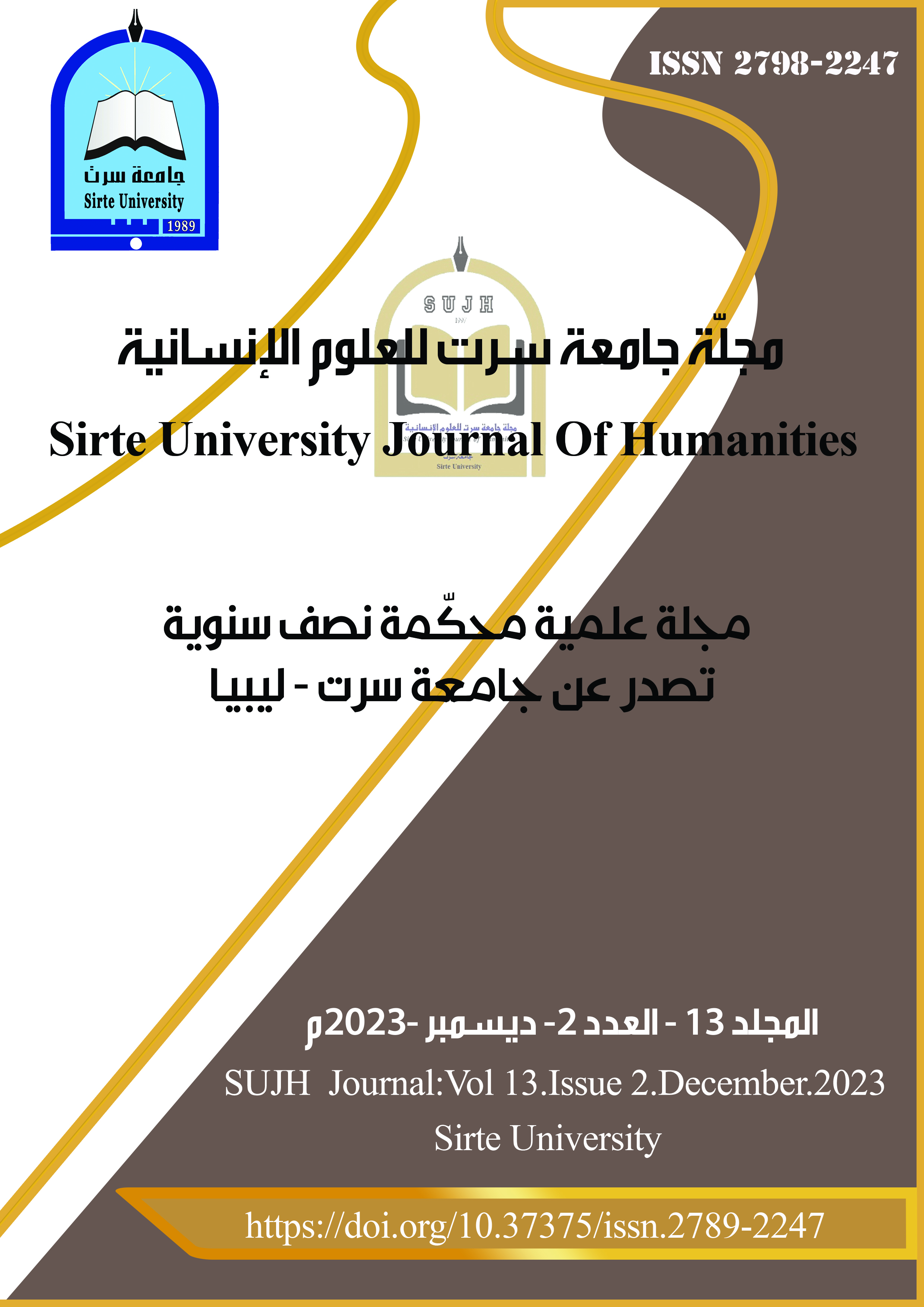Grammaticality Judgments as Evidence for Null-subject Parameter Resetting by Young and Adult Libyan EFL Learners
DOI:
https://doi.org/10.37375/sujh.v13i2.2417Keywords:
Pro-drop parameter, Grammaticality Judgements,, Age Factor in Second Language Acquisition, Parameter Resetting, Academic LevelAbstract
This study investigates a number of issues related to the differences between young and adult second language learners concerning the process of parameter resetting in cases when the first and the second language have two different values of the same parameter. The case which is examined in this study is the fact that Arabic which is the first language of the target groups of participants in this study is a pro-drop (null-subject) language, while English which they are studying as a foreign language is a non-pro- drop (non-null subject) language. The study uses Grammaticality Judgment tasks to which group of the Libyan EFL learners, the young or the adult learners’ group have reset this parameter from its value in Arabic to its different value in English. These Grammaticality Judgment tasks were applied to 91 university students who are studying in the Department of English, Faculty of Arts at Misurata University. The young learners’ group included 45 pupils in the first grades at the International Knowledge School in Misurata. The academic performance level of the participants in the two groups was considered as a factor which may affect the grammaticality judgments of the participants. The results showed that younger learners performed better in the grammaticality judgment tasks and that their judgments were not affected by the fact that their first language had a different value of the pro-drop parameter. It was also noticed that the intensive academic study at a university level did not help the older participants to be better than younger participants in this task. Moreover, the level of academic achievement was not a factor in this study that participants with lower academic levels performed better than those with higher academic levels
References
Alsaedi, N. (2017). Universal grammar theory and language acquisition: evidence from the null subject parameter. International Journal of Linguistics, 9(3), 49- 50. doi:10.5296/ijl. v9i3.11159
Ambridge, B. &Rowland, C. F. (2013). Experimental methods in studying child language acquisition. WIREs Cogn Sci, 4, 149–168. doi: 10.1002/wcs.1215
Chomsky, N. (1975). Reflection on language. New York: Random House
Ellis, R. (1994). The study of second language acquisition. Oxford: Oxford University Press.
Ellis, R. (2015). Understanding Second Language Acquisition. Oxford: Oxford University Press.
Genesee, F. (1976). The role of intelligence in second language learning. Language Learning. 26, (2), 267-280.
Johnson, L. & Newport, E. (1989). Critical period effects in second language learning: the influence of maturational state on the acquisition of English as a second language. Cognitive Psychology. 21, 60-99.
Krashen, S. Long, M. and Scarcella, R. (1979). Age rate and eventual attainment in second language acquisition. TESOL Quarterly. 13, 573-582.
Lardiere, D. (2007). Ultimate Attainment in Second Language Acquisition: A Case Study. Mahwah, NJ: Lawrence Erlbaum.
Lightbown, P.M. & Spada, N. (2013). How Languages Are Learned. Oxford: Oxford University Press.
Matthews, P. H. (2007). The Concise Oxford Dictionary of Linguistics. Oxford: Oxford University Press.
Mitchel, R., Myles, F., & Marsden, E. (2013). Second Language Learning Theories.
Patkowski, M. (1980). The sensitive period for the acquisition of syntax in a second language. Language Learning. 30, 449-472.
Schütze, C. T. (1996). The empirical base of linguistics: Grammaticality judgments and linguistics methodology. Chicago: The University of Chicago.
Singleton, D. (1989). Language Acquisition: The Age Factor. Clevedon, Avon: Multilingual Matters.
Slobin, D. I. (2012). Child Language Study and Adult Language Acquisition: Twenty Years Later. In M. Watorek, S. Benazzo, M. Hickmann (Eds.), Comparative Perspectives on Language Acquisition a Tribute to Clive Perdue (pp. 245- 262). Salisbury: MPG
Tavakoli, H. (2012). A Dictionary of Language Acquisition. Tehran: RAHNAMA PRESS.
Tomasello, M. (2003a). Constructing a Language: A Usage-Based Theory of Language
Acquisition. Cambridge, MA: Harvard University Press
Tremblay, A. (2005). Theoretical and methodological perspectives on the use of grammaticality judgment tasks in linguistic theory. Second Language Studies, 24(1), 129-167.
Ullman, M. (2001a). The neural basis of lexicon and grammar in first and second language: the declarative/procedural model. Bilingualism: Language and Cognition, 4, 105-22.
Ullman, M. (2006). The declarative/procedural model and the shallow structure hypothesis. Applied Psycholinguistics27, 97-105.
Paradis, M. (1994). Neurolinguistic aspects of implicit and explicit memory: implications for bilingualism and SLA. In N.C. Ellis(Ed.), Implicit and explicit learning of languages (pp. 393-419). San Diego: Academic Press.
Paradis, M. (2004). A neurolinguistic theory of bilingualism. Amsterdam: John Benjamins.
Paradis, M. (2009). Declarative and procedural determinants of second languages.
Amsterdam: Benjamins.
Vanpatten, B. & Benati, A.G. (2015). Key Terms in Second Language Acquisition .London: Bloomsbury.
Yamashita, J.& Jiang, N. (2010). L1 influence on the acquisition of L2 collocations: Japanese ESL users and EFL learners acquiring English collocations. Tesol Quarterly, 44(4), 1. 10.5054/tq.2010.235998.











